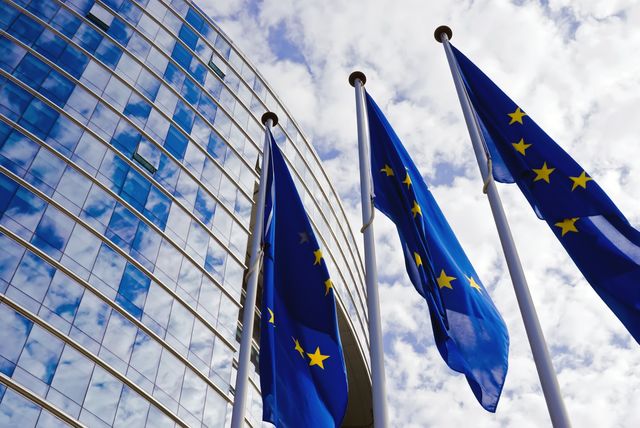The European Commission (EC) has published a briefing on the first 100 days of operation of the new concentration notification obligation under the Foreign Subsidies Regulation (FSR) (Regulation (EU) 2022/2560 of the European Parliament and the Council of 14 December 2022 on foreign subsidies distorting the internal market).
As well as providing insight into the transactions reviewed to date, the EC Briefing clarifies certain aspects of the notification obligation and the scope of the information parties must provide. In this update, we provide an overview of the EC Briefing, alongside our practical experience of guiding our private equity clients through the process.
Since the new regime became operational on 12 October 2023, the EC has received formal approaches from parties to 53 separate transactions. Of those, approximately one-third have been made in the context of private equity transactions.
A key learning gained from our experience of working on such notifications is that they require a substantial amount of information collection, even where that information is not ultimately submitted to the EC, and that PE funds can end up sharing certain fund-specific information which may not have been provided in any other regulatory context to date.
What is a notifiable transaction?
Mergers, acquisitions, and full-function joint ventures must be notified where:
- In the case of an acquisition or joint venture, the target or the joint venture is established in the EU and generated in excess of €500 million of EU gross revenue in the last full financial year. In the case of a merger, the €500 million EU revenue threshold can be met by either of the merging parties; and
- The companies involved in the transaction received aggregate foreign financial contributions (FFCs) of more than €50 million from non-EU governments or public entities in the three years prior to notification. In practice, this limb will be satisfied in the vast majority of private equity transactions.
Not all FFCs are reportable
The definition of FFC is intentionally broad and captures a range of economic incentives granted by governments or other public bodies. Collating records of FFCs is a time and resource intensive task which is necessary in order to determine whether:
- The notification threshold is satisfied (i.e. have the notifying parties received more than €50 million in FFCs over the past three years);
- Any FFCs falling within Article 5(1)(a) to (d) (Article 5 FFCs) may have been granted; and
- Any non-Article 5 FFCs must be reported.
Non-Article 5 FFCs must be reported only in instances where a single country has provided more than €45 million in relevant FFCs (including Article 5 FFCs) in the applicable three-year period. In our experience, and as noted in the EC Briefing, it is possible to meet the threshold for notification, but have no FFCs to report. Where this is the case, an explanation can be included in the notification in order to pre-empt questions from the EC.
LP investments and passive co-investments can be Article 5 FFCs
The EC considers that Article 5 FFCs are those FFCs which are most likely to qualify as ‘foreign subsidies’ (i.e., a contribution that will confer a benefit on the recipient, and is only available to a certain undertaking or group of undertakings). It will therefore focus the assessment on the potential for any such Article 5 FFCs to distort the internal market.
The EC takes the view that third country, public limited partner (LP) investments in an acquiring investment fund (e.g., by sovereign wealth funds or state pension funds) should in principle be reported as Article 5 FFCs on the basis that the purpose of these investments is typically to provide resources which are used by the funds to make the acquisitions (Article 5(1)(d)). The same approach appears to be taken by the EC in respect of (whether pre-existing or concurrent) third country, public passive co-investments in portfolio companies managed by the acquiring fund.
Accordingly, PE funds will need to be prepared to disclose certain information on third-country LPs and co-investors (although in our experience the EC will accept anonymised information, on a country-by-country basis) and to provide advocacy on why these do not equate to foreign subsidies (e.g., because they were made at market conditions and/or on the same conditions as private investors). And when FSR is in play on a deal, funds should have discussions with co-investors up-front to ensure that they are up to speed with the process and potential disclosure requirements.
The fund “exemption”
Considering the definitions used in the FSR, where a PE fund is the acquiring entity, the reporting obligation would extend to all funds managed by the investment company, and their respective portfolio companies. However, the FSR Implementing Regulation provides a limited exemption from the reporting obligation which is specifically applicable to transactions involving funds.
If the criteria for the application of the exemption are met, a PE fund can limit the reporting obligation for non-Article 5 FFCs to the fund or funds involved in the transaction. The criteria are as follows:
- Acquiring funds must be subject to Directive 2011/61/EU of 8 June 2011 on Alternative Fund Managers (AIFMD) or to an equivalent third country legislation in terms of prudential, organisational and conduct rules, including rules aimed to protect investors. This criterion is easily satisfied by EU-based funds (which are required to be subject to AIFMD), but it is not at all clear how non-EU-based funds can demonstrate equivalence. For example, the EC’s brief also highlights how equivalence has not been pre-established for certain jurisdictions, and from our experience, funds being subject to certain provisions of AIFMD (such as Article 42 relating to marketing funds in the EU) is not considered sufficient to establish equivalence.
- The majority of the investors in the non-acquiring funds must be different to those in the acquiring fund(s). This requires a detailed comparison of the common investors across all relevant funds in order to determine whether this is satisfied.
- Economic and commercial transactions between the acquiring and the non-acquiring funds (or their respective portfolio companies) are non-existent or limited. The EC considers that a transfer of assets between funds may serve as a vehicle for cross-subsidisation (and give rise to profit sharing between funds) if, for example, they have not been adequately valued. So, for example, if a portfolio company has transferred from one fund to another (e.g., in order to benefit from further capitalisation in the ordinary course of an investment cycle), additional advocacy may be required to demonstrate the absence of cross-subsidisation. If this is not accepted by the EC, the exemption may not be applied to the transferee fund.
Clearly the exemption does reduce part of the administrative burden placed on PE funds. However, a considerable amount of work is required to establish that the criteria are satisfied. This can be likened to the administrative burden placed on parties when establishing whether the notification or reportability thresholds have been met: even if the FFCs do not have to be submitted in a notification, the parties must still undertake the extensive process of collecting information regarding any FFCs.
Looking ahead
The EC’s briefing clarifies some of the recent requests that parties have received during the notification process. And for parties yet to experience the notification process, this type of communication is important given that the FSR does not provide for the publication of decisions (the EC simply informs the notifying parties by way of an administrative letter, promptly, at the end of the 25-working day standstill period).
As predicted before it became operational, the FSR regime places a very substantial administrative burden on transaction parties. And this burden, based on our experience, appears wholly disproportionate for PE funds.
In our view, LP investments and individual co-investments should never be categorised as potential Article 5 FFCs (and therefore possible ‘foreign subsidies’) when made on market terms. An exclusion from the reporting obligation would signal a more common-sense approach from the EC. We would expect that such a change could be implemented relatively swiftly, for example, through the introduction of a simplified notification procedure.
Subscribe to Ropes & Gray Viewpoints by topic here.
Authors
Stay Up To Date with Ropes & Gray
Ropes & Gray attorneys provide timely analysis on legal developments, court decisions and changes in legislation and regulations.
Stay in the loop with all things Ropes & Gray, and find out more about our people, culture, initiatives and everything that’s happening.
We regularly notify our clients and contacts of significant legal developments, news, webinars and teleconferences that affect their industries.



